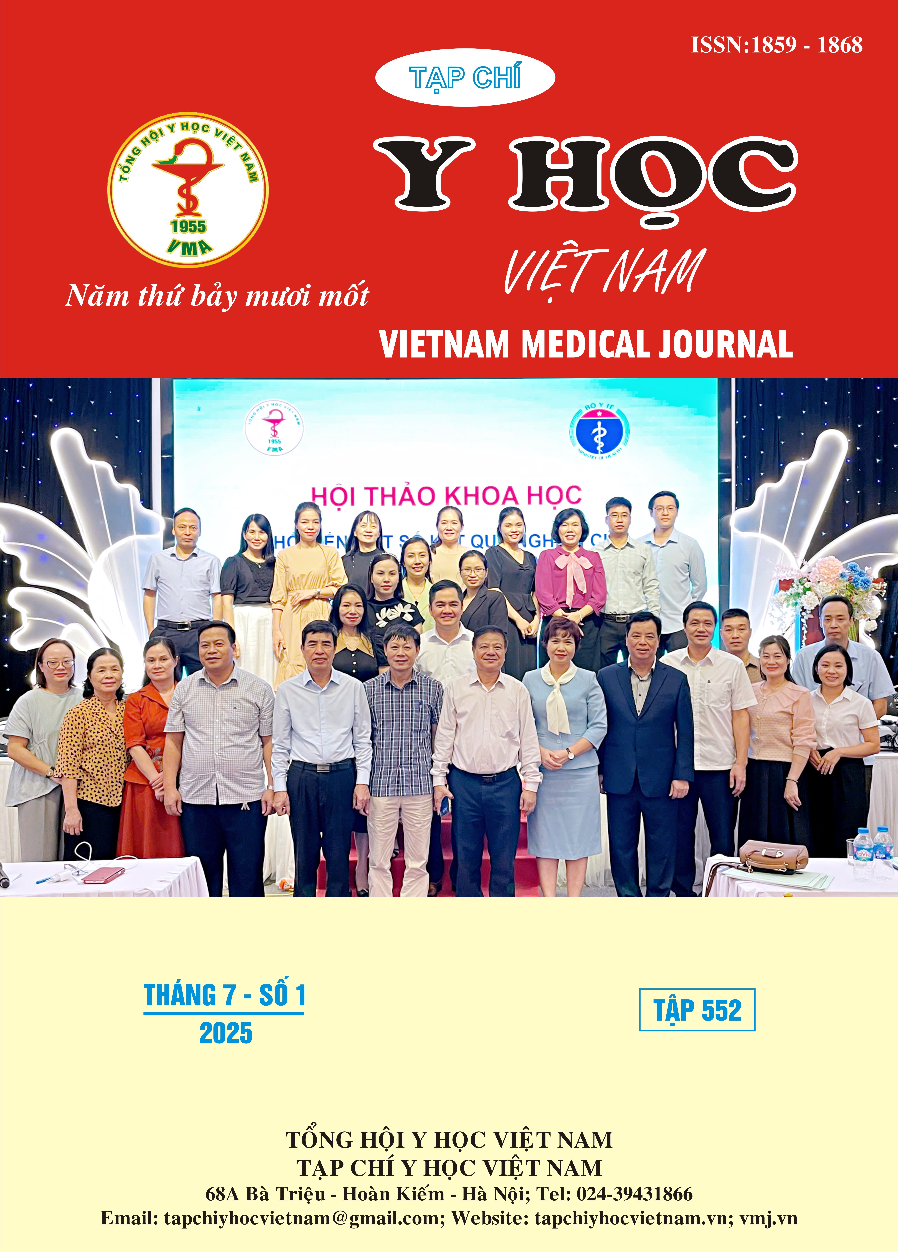EVALUATION OF THE DISTAL RADIOULNAR JOINT RADIOLOGY AND FUNCTION AFTER SURGICAL TREATMENT OF GALEAZZI FRACTURE
Main Article Content
Abstract
Background: Galeazzi fracture is a combined injury involving a fracture of the radial shaft and dislocation of the distal radioulnar joint (DRUJ). The standard treatment involves open reduction and internal fixation (ORIF) of the radius using a plate, followed by intraoperative assessment of the DRUJ and temporary K-wire fixation in cases of instability. Although this approach is widely used, the long-term effectiveness in restoring both function and anatomical integrity of the DRUJ remains controversial. This study aims to evaluate the functional and radiographic outcomes of the DRUJ following surgical treatment of Galeazzi fracture and to investigate the correlation between these two aspects. Methods: A retrospective study was conducted on 32 patients who underwent surgical fixation for Galeazzi fracture with postoperative radiographs confirming anatomical reduction. Patients were followed up for a minimum of 12 months. Functional outcomes were assessed using the Visual Analog Scale (VAS) for pain, DRUJ ballottement test, forearm pronation-supination range of motion, grip strength, and the modified Cooney score. Radiographic assessment included standard anteroposterior, lateral, and stress view (using a custom DRUJ translation device). Statistical analysis was performed using SPSS, with significance set at p < 0.05. Results: The mean follow-up duration was 14.6 ± 2.7 months. A total of 71.1% of patients achieved good to excellent functional outcomes. The mean VAS pain score was 1.22 (range: 0–6), with 65% of patients reporting no pain. A positive DRUJ ballottement test was found in 65.6% of cases. Stress radiographs revealed DRUJ subluxation or dislocation in 56.2% of patients. A statistically significant correlation was observed between radiographic instability and lower functional scores (p < 0.01). Conclusion: Surgical treatment of Galeazzi fractures results in relatively good functional recovery; however, the distal radioulnar joint remains unstable in a considerable proportion of cases.
Article Details
Keywords
Galeazzi fracture, distal radioulnar joint
References
2. Lê Đức Thọ. Kết quả phẫu thuật điều trị gãy Galeazzi tại Bệnh Viện Trung Ương Thái Nguyên. Tạp Chí Y Học Việt Nam. 2024; 533(1B): 30-34.
3. Browner BD, Jupiter JB, Levine AM, Trafton PG. Skeletal trauma: fractures, dislocations, ligamentous injuries. 2nd ed. Philadelphia: W.B. Saunders; 1992
4. Donndorff AG, Petrucelli EM, Gallucci GL, Boretto JG, Zaidenberg EE, Rellán I, et al. Galeazzi fracture–dislocations: Long-term prognosis of the distal radioulnar joint. Hand Surg Rehabil. 2021 Oct;40(5):572–8.
5. Mikic ZD. Treatment of acute injuries of the triangular fibrocartilage complex associated with distal radioulnar joint instability. J Hand Surg. 1995 Mar; 20(2):319–23.
6. Moore TM, Lester DK, Sarmiento A. The stabilizing effect of soft-tissue constraints in artificial Galeazzi fractures. Clin Orthop. 1985 Apr;(194):189–94.
7. Tsismenakis T, Tornetta P. Galeazzi fractures: Is DRUJ instability predicted by current guidelines? Injury. 2016 Jul;47(7):1472–7.
8. Varma R, Wani SS, Rai SK. Management and functional outcome of Galeazzi fracture-dislocation: a retrospective study at a tertiary care centre. Int J Res Orthop. 2017;3(4):809–813.


